In the bustling world of food production, the continuous operation sandwich grill plant stands out as a beacon of efficiency and innovation. These modern facilities are redefining the way sandwiches are made, ensuring a seamless flow of high-quality products. As we delve into the intricacies of these plants, it becomes clear that their impact on the industry is profound, offering not just a new level of productivity but also setting the stage for future advancements. Join us as we explore the inner workings of these dynamic plants and the transformative power they wield.
The Power of Continuous Operation: A Game-Changer in Sandwich Grill Plants
In the bustling world of fast-food and quick-service restaurants, the sandwich grill plant stands as a cornerstone of efficiency and productivity. The introduction of continuous operation has revolutionized the way these facilities function, transforming the landscape of sandwich production. This game-changing approach has redefined what’s possible in the sandwich industry, and here’s why.
Continuous operation in sandwich grill plants means a seamless, uninterrupted flow of production. Imagine a scenario where sandwiches are being grilled, assembled, and packaged without any downtime. This is no longer a pipe dream; it’s a reality achieved through advanced technology and strategic planning.
The backbone of continuous operation lies in the integration of sophisticated machinery and automation. Modern sandwich grill plants are equipped with conveyor belts, automated grills, and high-speed packaging lines that work in harmony to ensure a constant output. This level of automation not only minimizes errors but also maximizes output, making continuous operation a powerhouse for sandwich production.
One of the most significant benefits of continuous operation is the dramatic reduction in labor requirements. With automated systems handling much of the production process, fewer workers are needed to oversee the operation. This not only cuts down on labor costs but also allows for a more streamlined workflow. Employees can focus on tasks that require human oversight, such as quality control and maintenance, rather than being bogged down by repetitive tasks.
Another advantage is the consistency of the product. Continuous operation ensures that every sandwich meets the same high standards, maintaining the brand’s quality and customer satisfaction. This reliability is crucial in the food industry, where reputation and consumer trust are paramount.
The energy efficiency of continuous operation is also noteworthy. By optimizing the use of resources and minimizing waste, these plants contribute to a more sustainable and environmentally friendly approach to food production. Energy-saving features, such as smart heating systems and optimized lighting, are integrated into the design of these facilities.
The technology driving continuous operation is not just limited to the machinery itself. Advanced software systems are used to monitor and control the entire production process. These systems can predict maintenance needs, manage inventory, and even adjust production based on real-time demand. The result is a highly responsive and adaptable production line that can quickly adjust to market changes.
From a business perspective, the benefits of continuous operation are clear. With the ability to produce more sandwiches in less time, these plants can meet the increasing demand for quick-service food. This scalability is crucial for businesses looking to expand their market share or open new locations without sacrificing quality or efficiency.
Moreover, continuous operation has opened up new opportunities for innovation. Sandwich grill plants can experiment with different ingredients, flavors, and packaging options, knowing that the production line can handle the increased volume. This innovation can lead to new products and menu items that keep customers coming back for more.
However, the transition to continuous operation is not without its challenges. It requires significant investment in new technology and training for the workforce. The initial setup can be complex and costly, but the long-term benefits often outweigh the initial hurdles.
In conclusion, the power of continuous operation in sandwich grill plants is undeniable. It has redefined the industry, bringing efficiency, consistency, and sustainability to the forefront. As technology continues to evolve, we can expect to see even more advancements that will further enhance the capabilities of these modern production facilities. The future of sandwich production is bright, and continuous operation is at the heart of this transformation.
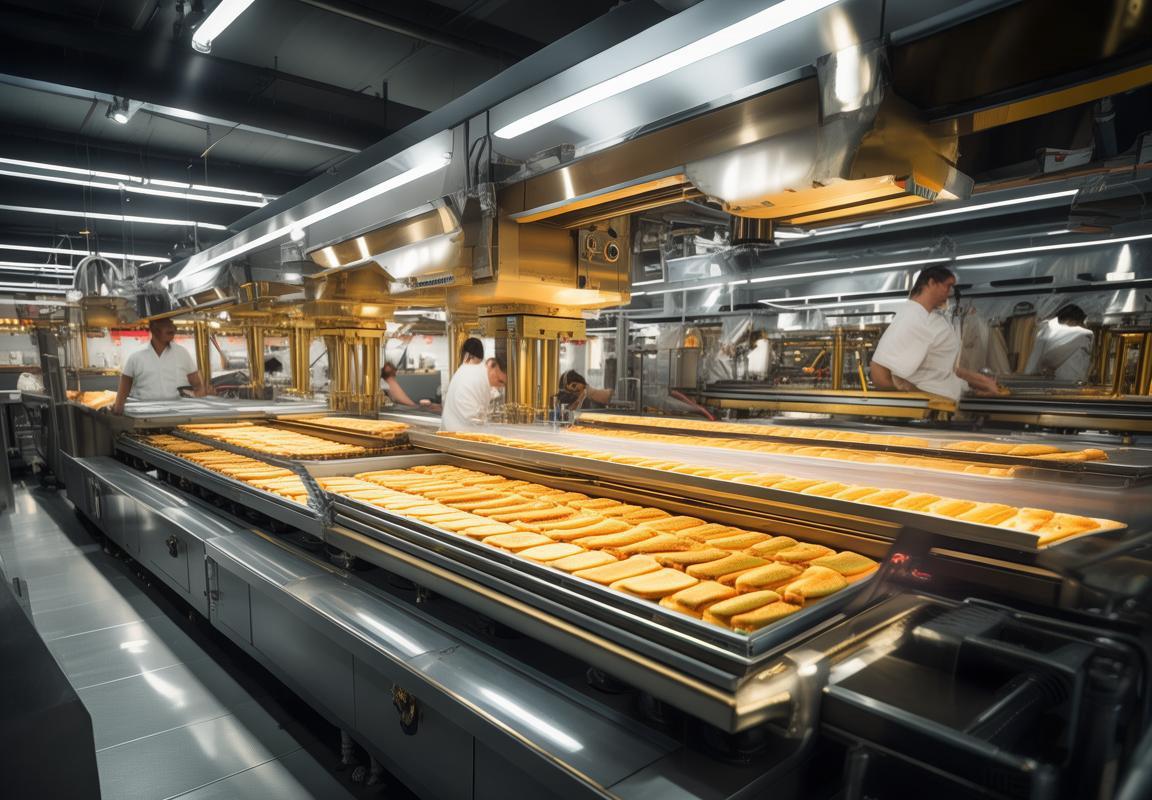
Understanding the Sandwich Grill Plant: What Makes It Tick?
The heart of a sandwich grill plant is a marvel of modern culinary engineering. These facilities are designed to produce a consistent and high-quality product, day in and day out. To understand what makes these plants tick, we need to delve into the intricate dance of equipment, processes, and teamwork that ensures the smooth operation of these industrial kitchens.
In the heart of a sandwich grill plant, you’ll find rows upon rows of equipment, each with a specific role in the production process. The ovens, grills, and presses are the backbone of the operation, providing the heat and pressure necessary to cook and shape the sandwiches. These machines are precision-engineered to maintain a consistent temperature and timing, ensuring that every sandwich is cooked to perfection.
The conveyor belts are a sight to behold, moving at a steady pace, guiding raw ingredients through the various stages of preparation. From the bread slices being buttered and seasoned to the fillings being added, each step is meticulously timed to ensure that the sandwiches are ready for the next phase without any delays. This synchronization is crucial for maintaining the plant’s continuous operation.
The quality control in a sandwich grill plant is relentless. Throughout the production line, there are several checkpoints where trained staff inspect the sandwiches for any defects. This could be anything from an uneven spread of condiments to a misaligned slice of meat. The immediate feedback loop allows for quick corrections, ensuring that only the best products make it to the consumer.
The automation in these plants is not just about efficiency; it’s also about reducing human error. Advanced systems can monitor the weight and consistency of the fillings, adjusting the machinery to maintain the desired quality. Sensors and computers work in tandem to ensure that the entire process is not only fast but also precise, with the ability to adapt to changes in demand or product specifications.
The design of a sandwich grill plant is as much about the flow of materials as it is about the flow of people. The layout is carefully planned to minimize bottlenecks and maximize throughput. Ingredients are stored strategically, with easy access to the production line. This reduces the time spent moving between different areas, allowing the plant to operate at its full potential.
Energy management is another critical aspect of what makes these plants tick. Efficient heating systems and energy-saving technologies are employed to keep costs down while maintaining high production standards. The use of renewable energy sources is also becoming more prevalent, reflecting the industry’s commitment to sustainability.
Safety is paramount in these facilities. The equipment is designed with safety in mind, featuring emergency stop mechanisms and clear safety protocols. Employees are trained rigorously to handle the machinery and follow the safety procedures, which are continually reviewed and updated as needed.
The teamwork within a sandwich grill plant is a blend of skilled laborers and technicians. Operators are responsible for the day-to-day running of the equipment, ensuring that it is in perfect working order. Technicians handle maintenance and repairs, often working behind the scenes to keep the production line running smoothly.
The role of management cannot be overstated. They are responsible for overseeing the entire operation, from the procurement of raw materials to the distribution of finished products. Effective management ensures that the plant operates efficiently, meets production targets, and adheres to health and safety regulations.
The continuous operation of a sandwich grill plant is not just about meeting high production volumes; it’s about maintaining a level of quality that keeps customers satisfied. The plant’s ability to produce the same high-quality sandwich time after time is what sets it apart in a competitive market.
In conclusion, the essence of a sandwich grill plant lies in its intricate balance of technology, process, and people. From the precision of the machinery to the dedication of the workforce, every element plays a crucial part in the plant’s ability to deliver a consistent, high-quality product. Understanding this intricate dance is key to appreciating the true power of continuous operation in the world of sandwich production.
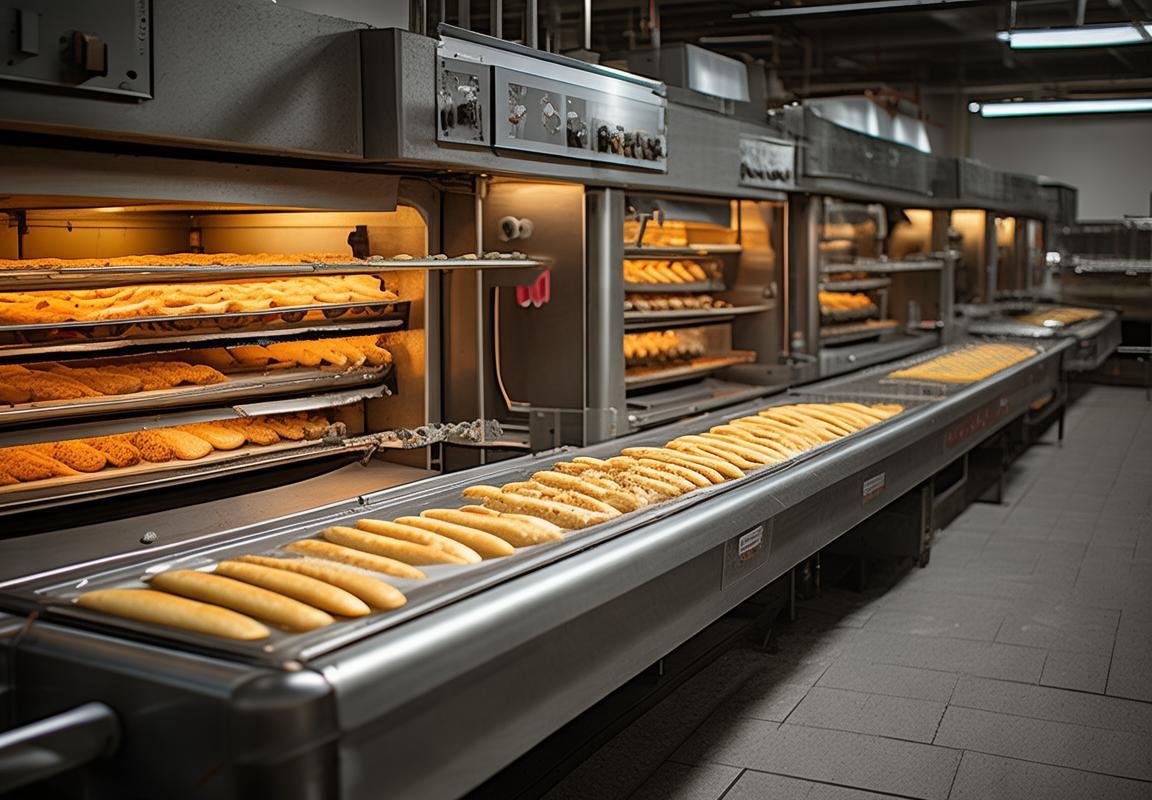
The Continuous Operation Sandwich Grill Plant: A Closer Look
In the heart of modern food production, the Continuous Operation Sandwich Grill Plant stands as a marvel of efficiency and precision. This facility is not just a place where sandwiches are made; it’s a symphony of technology and culinary artistry working in perfect harmony.
The plant is meticulously designed to ensure a seamless flow of operations, from raw ingredient delivery to the final packaging. The layout is strategically planned to minimize waste and maximize output, reflecting a commitment to both quality and sustainability.
At the core of the Continuous Operation Sandwich Grill Plant is a sophisticated automated system. Robots and conveyors move ingredients and sandwiches with precision, reducing the need for human intervention. This not only speeds up the process but also maintains consistency in the final product.
The grill area is perhaps the most critical part of the plant. High-tech grills are used to cook the sandwiches, each equipped with sensors that monitor the cooking process to ensure the perfect level of doneness. These grills can be adjusted to accommodate different types of bread and fillings, from classic ham and cheese to gourmet options like avocado and salmon.
The plant is also equipped with advanced inventory management systems. Real-time tracking of ingredients ensures that there’s never a shortage, and waste is kept to a minimum. This system also allows for quick restocking, keeping the production line running smoothly.
The workspace within the plant is designed to be ergonomic and safe. Employees operate the automated systems from control panels, monitoring the entire process. The plant’s design includes safety features like emergency stop buttons and regular maintenance checks to prevent accidents and downtime.
The quality control in the Continuous Operation Sandwich Grill Plant is stringent. Samples are taken at various stages of the production process to ensure that the sandwiches meet the highest standards. This includes checking for the correct portion sizes, ingredient quality, and overall presentation.
One of the standout features of this plant is its ability to customize orders on the fly. Orders can be received through a central system, and the plant’s machinery can quickly adjust to produce the specified sandwich, even if it’s a unique or seasonal creation.
Energy efficiency is another key aspect of the plant’s design. Solar panels and energy-saving lights are used to reduce the carbon footprint, and the plant is designed to use minimal water. These green initiatives not only contribute to environmental sustainability but also help to lower operational costs in the long run.
The Continuous Operation Sandwich Grill Plant is also a hub of innovation. Researchers and engineers are constantly working on new ways to improve the production process, from developing new recipes to upgrading the technology used in the plant.
The plant’s logistics are equally impressive. Distribution centers are strategically located to minimize transportation time and costs. Orders are packed and shipped with precision, ensuring that the sandwiches arrive at the customer’s location in optimal condition.
In the realm of food production, the Continuous Operation Sandwich Grill Plant is a testament to what can be achieved through technology, innovation, and a relentless pursuit of excellence. It’s a place where the art of making a sandwich meets the science of mass production, creating a product that is both delicious and reliable.
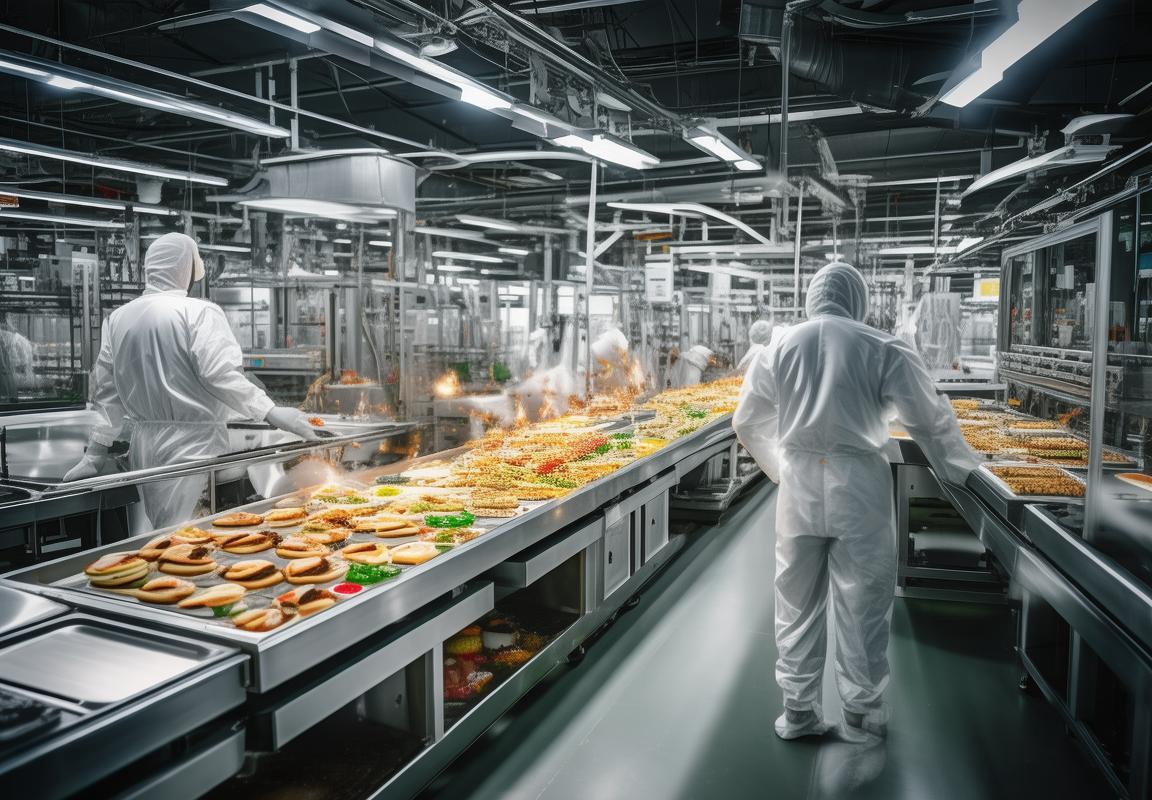
Benefits of Continuous Operation for Sandwich Grill Plants
The continuous operation of a sandwich grill plant brings a multitude of advantages that can significantly impact the efficiency and profitability of the business. Here’s a closer look at some of the key benefits:
Efficiency and Productivity- The very essence of continuous operation lies in its name—it’s about keeping the production line moving non-stop. This relentless pace means that sandwich grill plants can churn out a high volume of products in a short amount of time, maximizing productivity and meeting the demands of a fast-paced market.
Reduced Downtime- With a continuous operation, the likelihood of downtime is minimized. Scheduled maintenance can be carried out without halting the entire production process, ensuring that any interruptions are brief and the plant can quickly resume its operations.
Consistency in Quality- A continuous operation allows for better control over the production process. This consistency in quality is crucial in the sandwich industry, where the taste and texture of each sandwich must be uniform to satisfy customers. By maintaining consistent temperatures and pressure, the plant ensures that every sandwich meets the same high standards.
Cost Savings- The continuous flow of production can lead to substantial cost savings. By minimizing waste and reducing the need for additional labor due to longer working hours, sandwich grill plants can cut down on expenses. Moreover, the streamlined process often requires less energy, further contributing to cost reductions.
Improved Workforce Management- Continuous operation often requires a dedicated workforce that is trained to work in shifts. This approach can lead to better workforce management, as employees can specialize in specific tasks, leading to increased skill levels and efficiency. Additionally, shift work can help maintain a consistent production pace throughout the day.
Flexibility in Production- Continuous operation sandwich grill plants can adapt more easily to changes in demand. If there’s a sudden surge in orders, the plant can increase production without significant delays, ensuring that customers receive their orders promptly.
Enhanced Inventory Management- With a continuous flow of production, inventory management becomes more predictable. The plant can keep a close eye on stock levels, ensuring that ingredients are replenished in a timely manner to avoid production halts. This proactive approach to inventory can prevent waste and reduce costs.
Health and Safety Compliance- Continuous operation requires a strict adherence to health and safety regulations. By maintaining a clean and well-maintained environment, sandwich grill plants can reduce the risk of accidents and ensure that all products are safe for consumption.
Technology Integration- To achieve continuous operation, sandwich grill plants often invest in advanced technology. This integration of cutting-edge machinery and automation not only increases efficiency but also provides valuable data that can be used to optimize processes and improve the overall performance of the plant.
Market Responsiveness- The ability to operate continuously makes sandwich grill plants more responsive to market trends and consumer preferences. They can quickly adjust their menu, introduce new products, and respond to feedback, which is crucial in a competitive market.
Long-Term Sustainability- By focusing on continuous operation, sandwich grill plants can build a reputation for reliability and quality. This long-term sustainability can lead to customer loyalty, repeat business, and a competitive edge in the market.
Employee Satisfaction- A well-run continuous operation can lead to higher employee satisfaction. The structured shift work, along with the opportunity to specialize in specific tasks, can create a more enjoyable work environment, which can translate into higher morale and productivity.
Innovation and Continuous Improvement- The pressure to maintain a continuous operation often drives sandwich grill plants to innovate and seek continuous improvement. This focus on innovation can lead to the development of new products, improved production methods, and a more efficient use of resources.
In summary, the benefits of continuous operation in sandwich grill plants are vast, ranging from enhanced productivity and cost savings to improved quality and market responsiveness. By embracing this approach, these plants can not only meet the demands of a growing market but also lay the foundation for long-term success and growth.
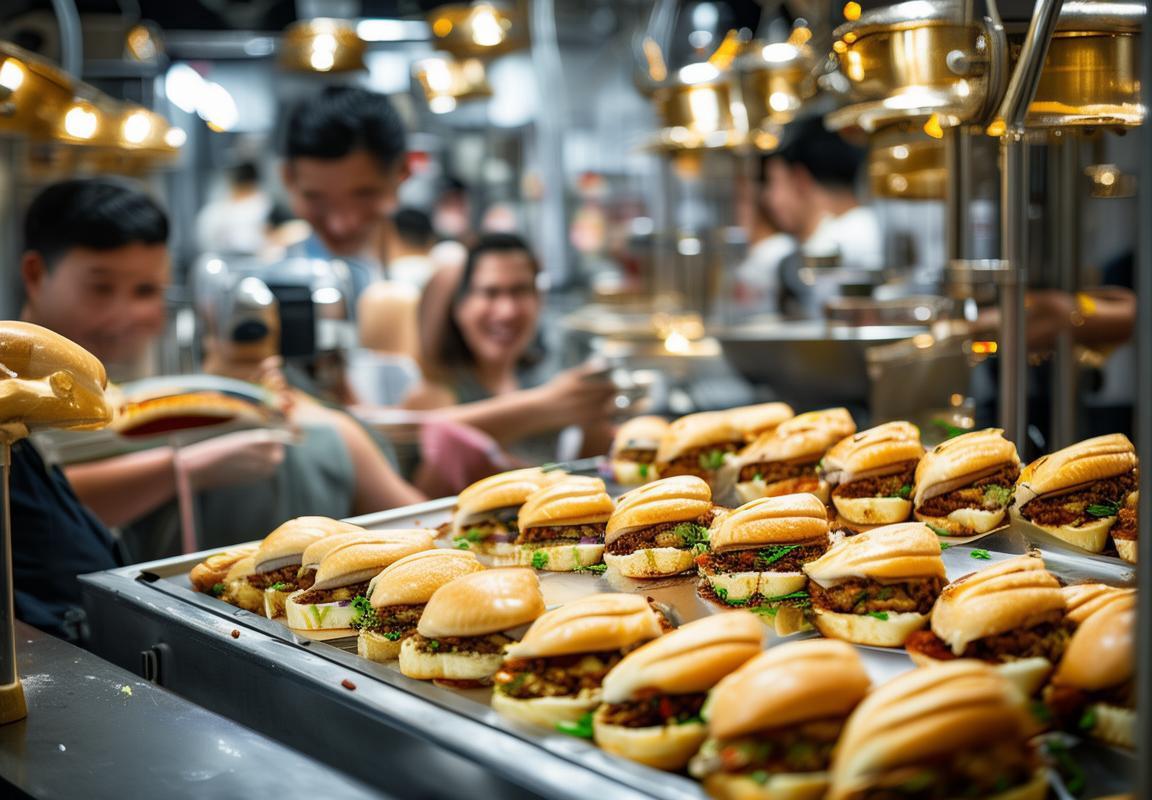
How Continuous Operation Enhances Efficiency and Quality
Continuous operation in sandwich grill plants can revolutionize the way these facilities operate, leading to significant enhancements in efficiency and quality. Here’s a closer look at how this approach transforms the production process:
Efficiency is the cornerstone of continuous operation, and its impact on sandwich grill plants is profound. By maintaining a steady flow of production, these plants can achieve a rhythm that minimizes downtime and maximizes output. This consistency is achieved through streamlined processes and advanced automation systems that ensure each stage of the sandwich-making process runs smoothly without interruption.
Automation plays a pivotal role in the continuous operation model. Robots and automated systems handle the repetitive tasks with precision, reducing the potential for human error. This not only increases the speed of production but also ensures that every sandwich is grilled to perfection, every time. The result is a significant reduction in the time it takes to produce a batch of sandwiches, allowing for higher throughput and less waiting time for customers.
Consistency is key in the food industry, and continuous operation delivers it in spades. The repetitive nature of the process means that each sandwich is subject to the same set of standards and quality checks. This uniformity is critical for maintaining brand consistency and customer satisfaction. Whether it’s the temperature of the grill, the application of condiments, or the timing of the cooking process, the continuous operation model ensures that these factors are meticulously controlled.
In a continuous operation sandwich grill plant, the quality control process is integrated into the production line. Sensors and monitoring systems keep a close eye on every aspect of the cooking process, alerting operators to any deviations from the desired specifications. This real-time monitoring allows for quick adjustments to be made, ensuring that the final product meets the highest quality standards. The result is a product that is not only consistent but also reliable.
Energy efficiency is another area where continuous operation shines. By keeping the production line running without breaks, sandwich grill plants can optimize their energy usage. This means less energy is wasted on starting up and shutting down the equipment, resulting in lower utility bills and a smaller carbon footprint. The continuous flow of production also means that heat is maintained more efficiently, reducing the need for additional heating or cooling.
The scalability of continuous operation is a significant benefit for sandwich grill plants. As demand for sandwiches increases, these plants can easily scale up their production without the need for extensive retooling or additional labor. The modular nature of many automated systems allows for the addition of more units or lines to handle the increased volume, ensuring that the plant can keep pace with market demands without compromising on quality.
Employee productivity is also positively affected by continuous operation. With the repetitive tasks automated, employees can focus on more complex and value-added activities. This not only reduces the risk of burnout but also allows for the development of new skills and expertise. The result is a more engaged and satisfied workforce, which can contribute to a more positive work environment and, ultimately, better customer service.
Innovation is fostered within continuous operation sandwich grill plants. The need to maintain a high level of efficiency and quality drives companies to invest in new technologies and processes. This can lead to the development of new sandwich recipes, improved cooking techniques, and even the creation of entirely new products. The continuous pursuit of innovation keeps these plants at the forefront of the industry.
Lastly, the cost-effectiveness of continuous operation cannot be overstated. While the initial investment in automation and technology can be substantial, the long-term savings in labor, energy, and waste reduction often outweigh these costs. As the plant operates at peak efficiency, the cost per unit decreases, making the business more competitive in the market.
In summary, the benefits of continuous operation in sandwich grill plants are multifaceted. From enhanced efficiency and quality to energy savings and scalability, this approach is reshaping the landscape of sandwich production. By embracing automation and continuous flow, these plants are not just cooking up a storm; they’re cooking up a sustainable and profitable future.
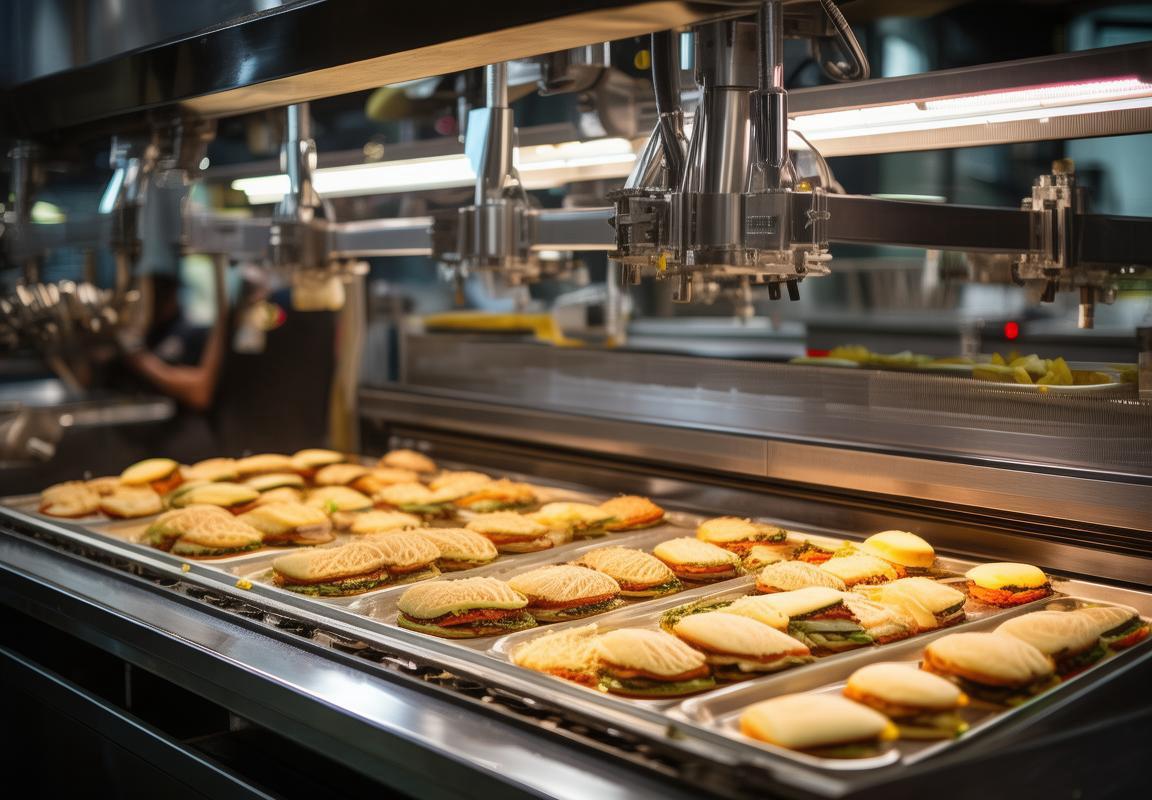
The Technology Behind the Scenes: Key Components of Continuous Operation
In the heart of a continuous operation sandwich grill plant, a symphony of technology hums to life, each component meticulously designed to ensure seamless production. Here’s a closer look at the key elements that keep this operation running smoothly:
-
Automated Conveyor Systems: The backbone of continuous operation, these systems are designed to move sandwiches from one station to the next without the need for manual intervention. They are engineered to minimize downtime and maximize throughput, ensuring a steady flow of products through the plant.
-
Precision Cooking Elements: The heart of any sandwich grill plant lies in its cooking equipment. Advanced heating elements, often controlled by sophisticated software, regulate temperatures to perfection. These elements can be adjusted to accommodate different types of bread and fillings, ensuring consistent and even cooking across all products.
-
Intelligent Software Control: At the helm of a continuous operation is a sophisticated control system. This software manages the entire process, from raw material handling to final packaging. It can optimize production schedules, monitor energy consumption, and predict maintenance needs, all in real-time.
-
Automated Feeding Systems: To maintain a continuous flow, automated feeding systems are crucial. These systems ensure that ingredients are delivered to the cooking stations at the right pace and in the correct order. They can handle a variety of ingredients, from meats and cheeses to vegetables and condiments, with precision.
-
Robotic Assembly: In some advanced plants, robotics play a significant role in the assembly process. Robots can stack fillings onto bread, apply condiments, and even perform tasks like slicing and portioning. Their precision and consistency help maintain high-quality standards without the variability of human hands.
-
Hygiene and Sanitation Equipment: Continuous operation requires a relentless focus on hygiene. Specialized cleaning systems are integrated into the plant to sanitize surfaces and equipment at regular intervals. These systems are designed to operate with minimal disruption to the production process.
-
Quality Control Sensors: Throughout the production line, sensors monitor the quality of the sandwiches. They can detect inconsistencies in size, shape, and texture, ensuring that only the highest-quality products reach the consumer. This real-time feedback loop allows for immediate adjustments to the production process.
-
Energy Management Systems: Efficient energy use is a cornerstone of continuous operation. These systems monitor and control the plant’s energy consumption, ensuring that resources are used optimally. They can adjust heating, cooling, and lighting based on demand, reducing waste and costs.
-
Wastewater and Recycling Systems: In a continuous operation, waste management is critical. Advanced wastewater treatment systems ensure that any liquid waste is processed effectively, minimizing environmental impact. Additionally, recycling programs help to reduce the plant’s carbon footprint by reusing materials where possible.
-
Integration of Supply Chain: A continuous operation sandwich grill plant is often tightly integrated with its supply chain. This means that raw materials are delivered just in time, reducing inventory and storage costs. The plant can also respond quickly to changes in demand, ensuring a flexible and efficient operation.
These components work in harmony to create a continuous operation that is not just about speed but also about precision, quality, and sustainability. The result is a streamlined process that can produce thousands of sandwiches per hour, each one meeting the exacting standards of the modern food industry.
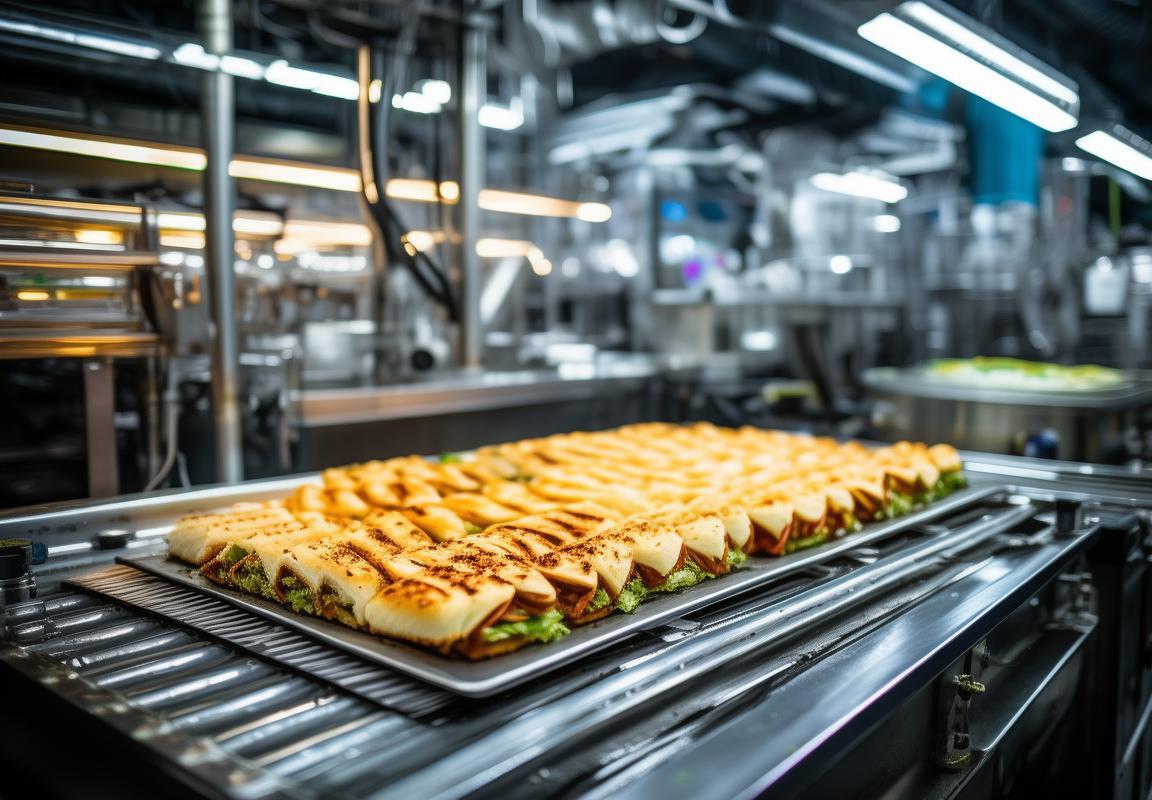
The Impact of Continuous Operation on the Sandwich Industry
In the world of sandwich manufacturing, the adoption of continuous operation has revolutionized the industry, bringing about significant changes that extend beyond the walls of individual plants. This shift has had a profound impact on the sandwich industry as a whole, reshaping how products are produced, distributed, and consumed.
The seamless flow of production in continuous operation sandwich plants has led to a more streamlined and efficient supply chain. This has allowed for better inventory management, reducing waste and ensuring that fresh, high-quality sandwiches are available to customers at all times. The industry’s ability to respond quickly to market demands and consumer preferences has become more agile, thanks to the consistent output of these plants.
Consumers have also felt the ripple effects of continuous operation. With a steady supply of sandwiches, retailers and restaurants can maintain consistent product availability, which is crucial for customer satisfaction and loyalty. The ability to offer a variety of sandwiches with shorter lead times has become a competitive advantage, as customers now expect a broader selection and faster service.
The environmental impact of continuous operation cannot be overlooked. By optimizing energy use and reducing waste, these plants contribute to a more sustainable approach to food production. This shift towards sustainability resonates with environmentally conscious consumers, who are increasingly seeking out products that align with their values.
In the realm of innovation, continuous operation has spurred the development of new technologies and processes. The industry has seen advancements in automation, which not only increases efficiency but also minimizes the risk of human error. These innovations have paved the way for the creation of more sophisticated sandwich production lines that can handle complex recipes and ingredients with ease.
The industry’s competitive landscape has evolved as well. Continuous operation has allowed smaller players to enter the market and compete on a level playing field with larger, established brands. This democratization of the market has led to more variety and innovation, as new entrants bring fresh ideas and perspectives to the table.
From a regulatory standpoint, the continuous operation of sandwich plants has necessitated stricter adherence to food safety standards. The industry has had to invest in technologies and training to ensure that every sandwich that leaves the plant meets the highest safety and quality standards. This has not only protected consumers but has also built trust and credibility within the industry.
The global reach of the sandwich industry has expanded due to continuous operation. Products can now be produced in one region and distributed to another, breaking down geographical barriers. This has opened up new markets and opportunities for growth, allowing sandwich brands to expand their customer base beyond local borders.
In terms of workforce, the continuous operation model has demanded a rethinking of labor practices. Plants are now staffed with skilled workers who are trained to operate complex machinery and maintain high production standards. The industry has seen an increase in specialized roles, such as maintenance technicians and quality control inspectors, ensuring that the seamless flow of production is maintained.
The impact of continuous operation on the sandwich industry is multifaceted, affecting every aspect from production to consumption. It has transformed the way sandwiches are made, improving efficiency, quality, and sustainability. The industry is now better positioned to meet the demands of a fast-paced, consumer-driven market, with a focus on innovation and customer satisfaction at its core.
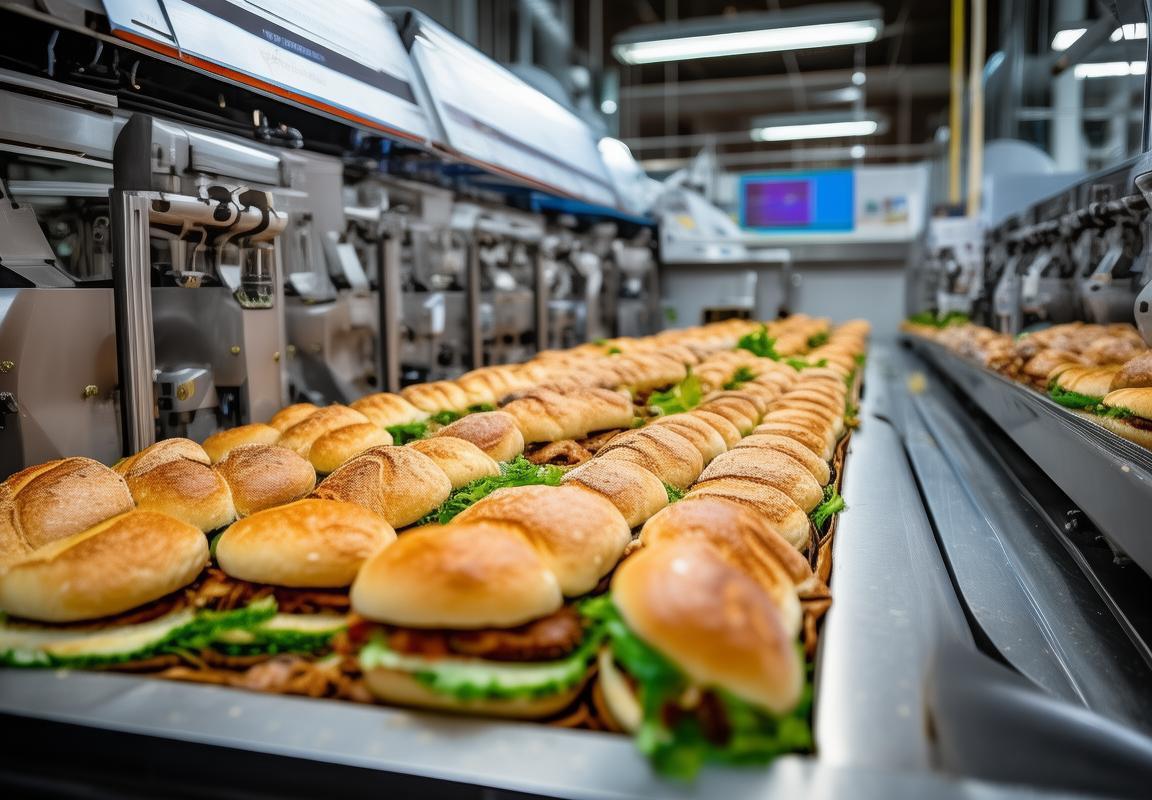
Case Studies: Success Stories of Continuous Operation Sandwich Grill Plants
In the world of fast-food manufacturing, the adoption of continuous operation in sandwich grill plants has become a beacon of success. Let’s delve into some of the remarkable success stories that showcase the transformative power of this approach.
The story of “GrillGuru” began with a vision to revolutionize the sandwich-making process. By implementing a continuous operation system, they were able to streamline their production line, reducing downtime and increasing output. The result? A significant boost in their market share and customer satisfaction.
At “Savory Solutions,” the switch to continuous operation was a game-changer. The plant, which once struggled with inconsistent quality and high labor costs, now boasts a seamless production process. The continuous flow of ingredients and the precision of automated systems have led to a product that is consistently fresh and delicious.
“QuickBite” was another plant that took a leap of faith with continuous operation. By integrating advanced technology and optimizing their workflow, they managed to double their production capacity without expanding their physical footprint. This not only saved costs but also allowed them to meet the growing demand for their sandwiches.
One of the most impressive transformations was seen at “Sandwich Supreme.” This plant, known for its high-quality sandwiches, faced challenges with maintaining consistency due to the manual nature of their production process. With the introduction of continuous operation, they achieved a remarkable consistency in their product, which, in turn, led to a surge in repeat business and positive word-of-mouth.
The “BistroBlast” sandwich plant had a unique challenge: their sandwiches were highly customizable, which traditionally meant a slower production time. By implementing a continuous operation system that allowed for quick changes between different sandwich configurations, they were able to maintain their flexibility while also speeding up production. This balance has been a key factor in their ongoing success.
In the case of “TasteTrek,” the transition to continuous operation was a response to the increasing competition in the market. By automating certain aspects of their production, they were able to reduce errors and improve the overall quality of their sandwiches. This focus on quality has helped them stand out in a crowded market.
“GrillGourmet” faced a different set of challenges, including fluctuating demand and limited storage space. Continuous operation allowed them to scale their production up and down more efficiently, ensuring they never had too much or too little inventory. This flexibility has been crucial in managing their resources effectively.
“Sandwich Sensations” had a particularly interesting case. They were able to reduce their energy consumption by 30% through the implementation of a continuous operation system. This not only saved them money but also reduced their environmental footprint, making their brand more attractive to eco-conscious consumers.
The “BiteBlitz” plant took a modular approach to continuous operation. By breaking down their production line into smaller, manageable modules, they were able to upgrade and maintain each section independently. This modular design has allowed them to stay at the forefront of technology without the need for a complete overhaul of their entire system.
“SnackSmith” faced the challenge of producing a variety of sandwiches with different cooking times. The continuous operation system they adopted allowed for precise timing and temperature control, ensuring that each sandwich was cooked to perfection. This attention to detail has been a key factor in their reputation for excellence.
“GrillGala” had a particularly innovative approach to continuous operation. They integrated a predictive maintenance system that monitored the health of their equipment in real-time. This proactive approach allowed them to prevent downtime and maintain peak performance, which has been a significant driver of their success.
In conclusion, the success stories of these sandwich grill plants demonstrate the versatility and effectiveness of continuous operation. From increased efficiency and quality to better resource management and environmental sustainability, the benefits are clear. As the industry continues to evolve, it’s likely that more plants will follow suit, embracing the continuous operation model to stay competitive and meet the demands of a fast-paced world.
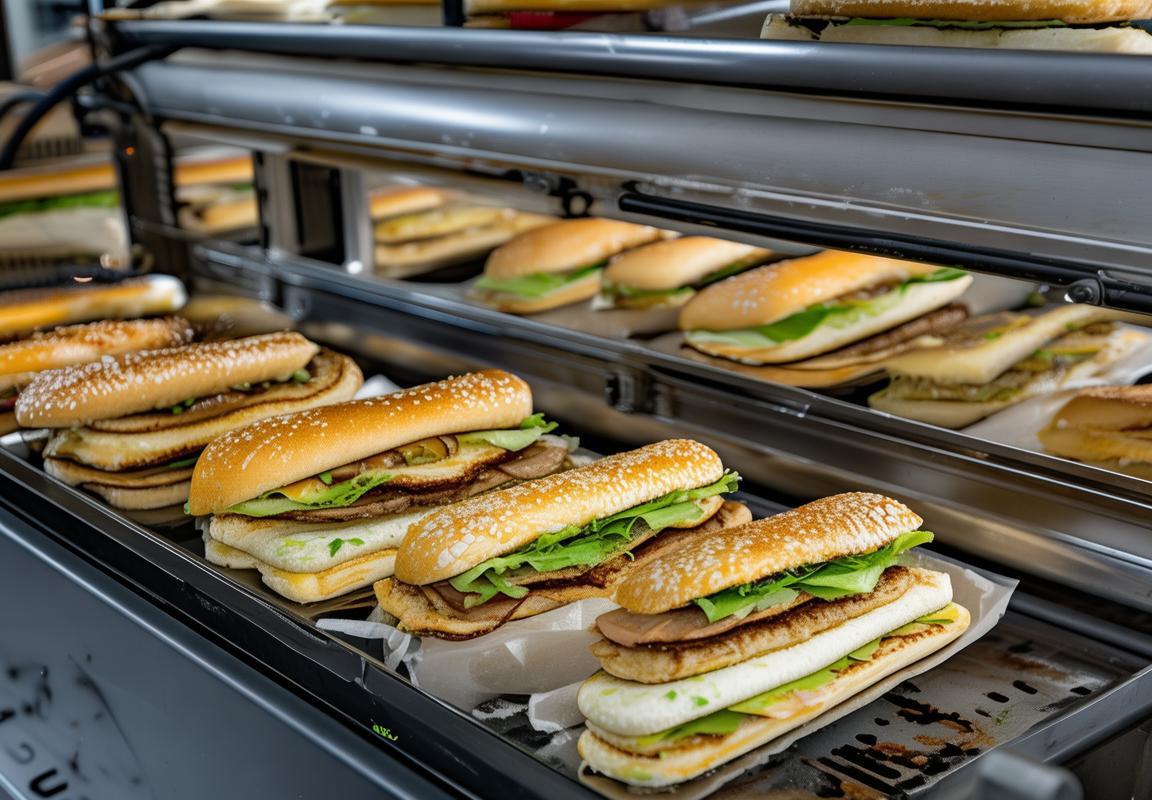
Challenges and Solutions: Overcoming Obstacles in Continuous Operation
In the realm of sandwich manufacturing, achieving continuous operation is no small feat. It requires a meticulously designed system that can run seamlessly, day in and day out. However, like any sophisticated machinery, challenges are inevitable. Let’s delve into some of the common hurdles faced in maintaining continuous operation and the innovative solutions that have been developed to overcome them.
-
Equipment BreakdownsEquipment breakdowns can halt production in their tracks, leading to downtime and financial losses. To mitigate this, many sandwich grill plants have invested in predictive maintenance programs. These programs use advanced sensors and diagnostics to monitor the health of machinery, allowing for timely repairs and replacements before a critical failure occurs.
-
Human ErrorDespite the most stringent training programs, human error can still creep into the production line. To combat this, some plants have implemented automated systems that can perform routine tasks, reducing the likelihood of human error. Additionally, real-time monitoring systems can alert operators to potential issues, allowing them to intervene before they escalate.
-
Energy ConsumptionMaintaining a continuous operation requires a substantial amount of energy. Plants have found ways to optimize their energy usage by integrating energy-efficient technologies and renewable energy sources. Solar panels, smart lighting systems, and energy management software are just a few examples of how operations can be made more sustainable.
-
Quality ControlMaintaining consistent quality in a continuous operation can be challenging. To ensure that every sandwich meets the highest standards, some plants have employed advanced quality control systems. These systems can perform real-time checks on the output, flagging any deviations from the set specifications. Automated inspection stations and AI-driven sensors play a crucial role in this process.
-
Space and LayoutThe layout of a sandwich grill plant can significantly impact its ability to operate continuously. A well-designed layout minimizes bottlenecks and ensures that materials and products flow smoothly through the production process. Plants have turned to 3D modeling and simulation software to optimize their floor plans, creating layouts that maximize efficiency and reduce waste.
-
Supply Chain CoordinationA continuous operation depends heavily on a reliable supply chain. Delays or disruptions in the supply of ingredients or components can quickly lead to downtime. To address this, plants are working closely with their suppliers to implement just-in-time (JIT) delivery systems. JIT ensures that materials arrive precisely when they are needed, reducing inventory costs and the risk of stockouts.
-
Regulatory ComplianceSandwich grill plants must adhere to a host of regulatory requirements, which can be a challenge when aiming for continuous operation. To stay compliant, many plants have invested in compliance management software that keeps track of all relevant regulations and requirements. This ensures that the operation remains within legal boundaries without disrupting the production flow.
-
Training and DevelopmentThe success of a continuous operation hinges on the skill level of the workforce. Continuous training and development programs are essential to keep employees up-to-date with the latest techniques and technologies. By investing in their employees, plants can build a workforce that is capable of handling the demands of continuous operation.
-
Adaptability and FlexibilityThe food industry is subject to constant changes, whether due to consumer preferences, new regulations, or market trends. Continuous operation requires plants to be adaptable and flexible. This means investing in modular systems that can be easily reconfigured to accommodate new products or production methods. It also involves fostering a culture of innovation within the organization.
-
Environmental ConsiderationsAs sustainability becomes increasingly important, continuous operation in sandwich grill plants must also address environmental concerns. This involves reducing waste, minimizing the plant’s carbon footprint, and exploring eco-friendly practices. From biodegradable packaging to water recycling systems, plants are taking steps to ensure that their operations are environmentally responsible.
In summary, the challenges of continuous operation in sandwich grill plants are vast, but so are the solutions. By focusing on equipment reliability, minimizing human error, optimizing energy consumption, ensuring quality control, streamlining the layout, coordinating the supply chain, maintaining regulatory compliance, investing in training, fostering adaptability, and considering environmental impact, these plants can navigate the complexities of continuous operation and emerge stronger, more efficient, and more sustainable than ever before.
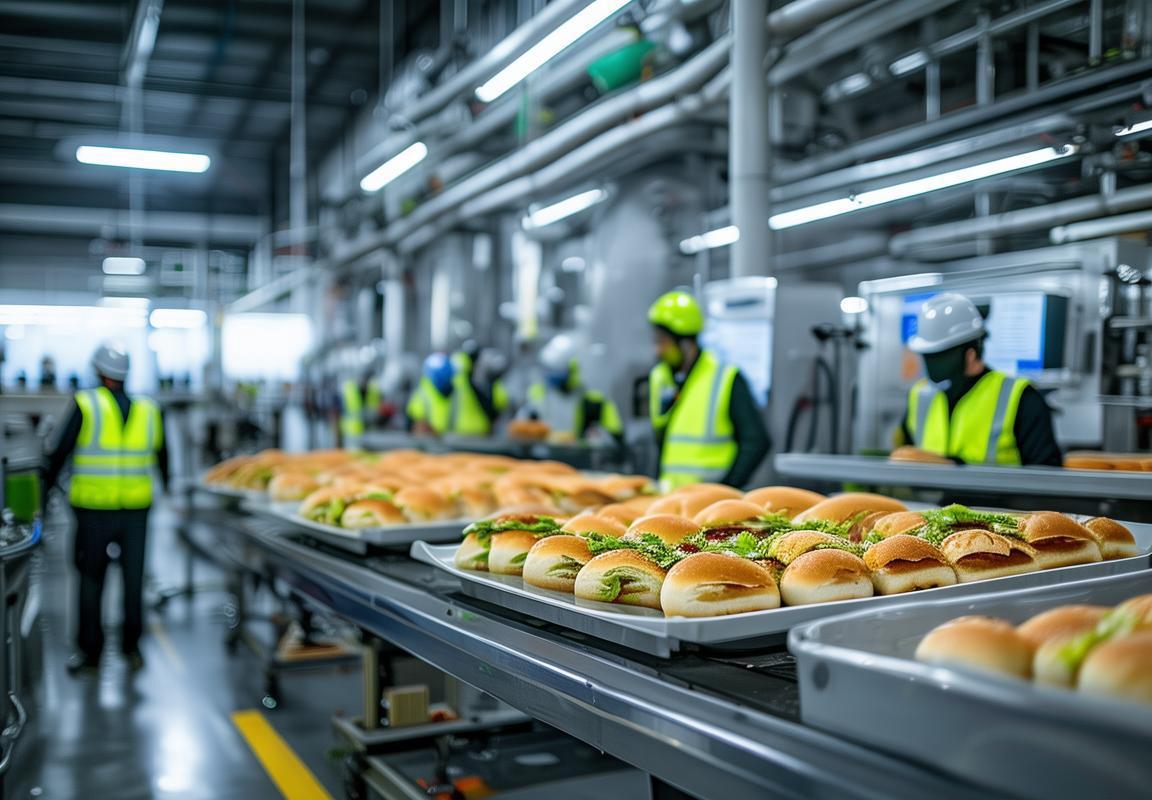
The Future of Sandwich Grill Plants: Innovations and Trends to Watch For
The continuous evolution of technology has brought about a revolution in the sandwich industry, with sandwich grill plants leading the charge. These facilities are the backbone of the sandwich manufacturing process, ensuring that our beloved sandwiches are produced efficiently and with high quality. Let’s delve into the various aspects of these plants, focusing on the innovations and trends that are shaping their future.
The heart of a continuous operation sandwich grill plant lies in its ability to maintain a seamless flow of production. These plants are designed to operate 24⁄7, maximizing output and minimizing downtime. One key innovation is the integration of automated systems that manage the entire process, from raw material handling to packaging and distribution.
Automation has not only increased efficiency but also improved quality control. Sensors and smart technology ensure that every sandwich meets the exacting standards of taste, texture, and presentation. This level of precision is nearly impossible to achieve with traditional methods, making continuous operation plants a cornerstone of the industry.
In terms of sustainability, these plants are at the forefront. Energy-saving technologies, such as LED lighting and variable speed drives, reduce the carbon footprint while keeping operational costs low. Water recycling systems and waste reduction strategies further contribute to a more eco-friendly production process.
Case in point, the “GreenGrill” plant in Europe has implemented an innovative water purification system that recycles up to 90% of the water used in production. This not only conserves resources but also reduces the plant’s overall environmental impact.
The trend towards personalized food experiences is also reshaping the landscape of sandwich grill plants. With the advent of digital kiosks and mobile apps, customers can now customize their sandwiches to their liking, directly influencing the production process. This shift requires plants to adapt by investing in flexible and scalable systems that can cater to a diverse range of orders.
The use of advanced robotics is another game-changer. Collaborative robots (cobots) are now working alongside human staff, performing tasks such as portion control, filling, and sealing. These robots are not only precise but also adaptable, allowing for quick adjustments to changing production needs.
Innovation in ingredient handling is also noteworthy. Modern sandwich grill plants are increasingly incorporating automated systems that can manage the storage and distribution of ingredients. This not only ensures freshness but also reduces the risk of cross-contamination, which is crucial in the food industry.
Moreover, the integration of the Internet of Things (IoT) has transformed the way plants are managed. Real-time data collection allows for predictive maintenance, reducing the likelihood of breakdowns and improving overall operational reliability. This data-driven approach also enables plants to optimize their production schedules, ensuring that they run at peak efficiency.
The rise of online ordering and delivery has had a significant impact on sandwich grill plants. To keep up with this demand, plants are investing in advanced packaging technologies that not only protect the sandwiches during transit but also enhance their appeal to consumers. Eco-friendly packaging options are becoming more prevalent, aligning with consumer preferences for sustainability.
Despite these advancements, continuous operation sandwich grill plants face their fair share of challenges. One major obstacle is the need for constant training and upskilling of the workforce to keep pace with technological changes. Ensuring that employees are proficient in operating and maintaining the latest equipment is crucial for the plant’s success.
Another challenge is maintaining consistency in quality across different shifts. Continuous operation means that the same high standards must be maintained day and night, which can be difficult to achieve without the right systems and processes in place.
To address these challenges, plants are investing in comprehensive training programs and implementing strict quality control measures. Regular audits and continuous improvement initiatives are also being used to refine operations and ensure that the plant is always striving for excellence.
Looking ahead, the future of sandwich grill plants is bright, filled with opportunities for further innovation. The integration of artificial intelligence (AI) could lead to even greater automation and predictive capabilities. AI could also be used to analyze consumer trends and preferences, allowing plants to tailor their production to meet demand more effectively.
Virtual reality (VR) and augmented reality (AR) are emerging as valuable tools for training employees and managing complex machinery. These technologies could provide immersive experiences that simulate real-world scenarios, ensuring that staff are well-prepared for any situation.
The development of new, healthier ingredients is another trend to watch for. As consumers become more health-conscious, sandwich grill plants will need to adapt by offering a wider range of nutritious options. This could involve the use of plant-based proteins, whole grains, and natural flavorings.
Lastly, the emphasis on sustainability will continue to drive innovation. As the industry works towards reducing its environmental impact, we can expect to see more efficient energy solutions, water conservation techniques, and waste reduction strategies.
In summary, the continuous operation sandwich grill plant is at the forefront of the sandwich industry’s evolution. Through the integration of cutting-edge technology, a focus on sustainability, and a commitment to quality, these plants are setting the stage for a future where sandwiches are not only delicious but also responsibly produced.